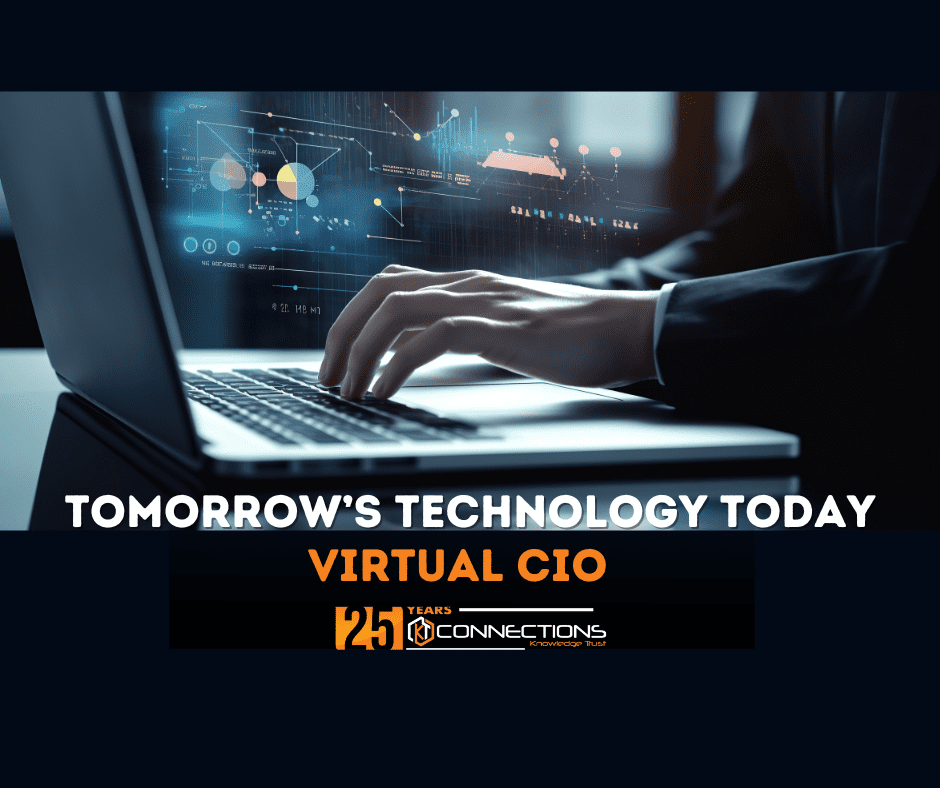
For most modern businesses, success is often measured in bytes and algorithms. As more businesses adopt new applications and intelligent processes, the role of a Chief Information Officer who navigates the digital landscape with strategic readiness becomes paramount. Enter the Virtual Chief Information Officer (vCIO), a digital architect reshaping the way businesses approach technology. Much more than a mere consultant, the vCIO embodies the future of IT leadership – seamlessly blending business acumen, technological expertise, and a proactive approach to propel organizations toward innovation and resilience.
What is a Virtual Chief Information Officer?
A Virtual Chief Information Officer (vCIO) is an outsourced contractor or company virtual professional who assumes the responsibilities of a Chief Information Officer for an organization providing strategic leadership and guidance on matters related to Information Technology within an organization. The vCIO collaborates with and advises the client’s IT department, performing the same functions as a traditional CIO. This includes formulating strategic IT goals, planning IT budgets, analyzing and optimizing business processes, and facilitating technological changes.
The vCIO plays a crucial role in helping clients maintain and secure their existing IT infrastructure. Additionally, they offer forward-thinking services, such as developing long-term strategic IT goals, identifying innovation opportunities, and contributing to business success and revenue growth. Particularly beneficial for small to medium-sized businesses lacking an internal IT department or with limited IT resources, a vCIO provides efficiency, flexibility, and expertise to enhance your business’s long-term IT strategy at a more manageable cost than hiring a full-time CIO.
Strategic Advice offered by a vCIO
- Data & Network Security
- Software & Hardware Performance Checks
- IT Strategy
- IT Budget
- Process Optimization
- Facilitated Tech Improvements
- Annual IT Roadmaps
- Technology Projects
- Vendor Management
- Regulatory Compliance
- Data Governance
- Approval of IT Architecture Changes
- Point-of-Contact for IT Services
- Managed Deadlines and Dates
- Maintained Central Repository of IT Knowledge Base
- Point of Escalation
- IT Reports
- IT Trends
Qualities to Look for in a vCIO
Alignment with Business Goals
- Ability to connect IT strategy with overall business objectives.
- Effective communication with the decision-makers in the organization.
Technology Trends Knowledge
- You will want to choose a company that stays informed about emerging technologies and their relevance to your organization.
- You will also want someone who regularly meets with their clients to understand their changing business needs and technology opportunities.
IT Project Planning and Management
- Proactive planning for new business projects based on your unique business needs and budget.
IT Budgeting Expertise
- Guidance in planning your business’s IT budget for cost optimization strategies.
- Someone who understands how to track the return on investment for existing and potential technologies.
Interpersonal Skills
- Someone who is adaptable to your business’s work culture, style, and business requirements.
- Someone who is transparent in communication about availability, responsiveness, and scope of services.
Flexibility with Changing Business Goals
- Proactive planning while being adaptable to your evolving busines goals.
CIO vs. vCIO Differences
There are several distinctions between a CIO and a vCIO:
- CIOs are typically employed by organizations as staff members, whereas vCIO’s are contractors with the potential to have multiple clients.
- While both handle similar responsibilities, in-house CIOs may have a nuanced understanding of internal dynamics, whereas vCIOs provide a fresh perspective and diverse experience.
- Traditional CIOs are recruited through standard hiring practices, while vCIOs are contracted through third-party providers.
- CIOs are salaried with benefits, while vCIOs usually have negotiated contract pricing, often charged hourly or as a flat fee without additional benefits.
Advantages of a vCIO
- A well-devised vCIO strategy not only contributes to long-term cost savings but also enhances staff productivity, and a reduction in downtime, and optimizes the efficient utilization of your company’s technology-related investment.
- Simpler onboarding avoids the time-consuming and costly process of hiring a full-time CIO.
- A contracted vCIO offers 24/7 support, with multiple consultants available for assistance.
- A vCIO often provides greater objectivity and a fresh perspective, as they are not encumbered by internal politics.
- A vCIO offers high-level IT expertise to small and medium-sized businesses at a more affordable cost than an on-staff CIO.
Disadvantages of a vCIO
- A vCIO is best suited for organizations aiming for long-term technology strategies and may not be suitable for businesses with simpler needs.
- It takes time for a vCIO to fully get to know a business and its culture.
- May lack face-to-face interaction, which some companies consider essential, especially among senior leadership.
A Virtual Chief Information Officer (vCIO) can bring together many varied skills and expertise to be a powerful resource for your business. Allowing you to focus more on the day-to-day operations of your business while ensuring that your IT systems perform at their best. KT Connections is committed and dedicated to assisting you in developing a vCIO IT plan that fits your business needs and budget. To learn more about how we can serve your IT needs contact our sales team today!
